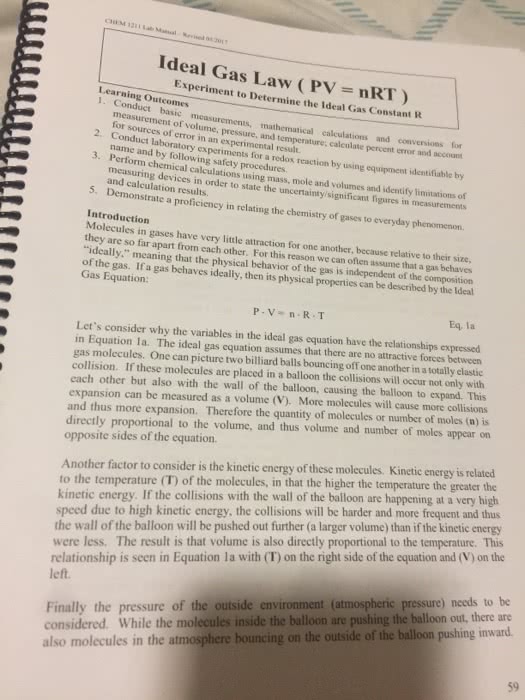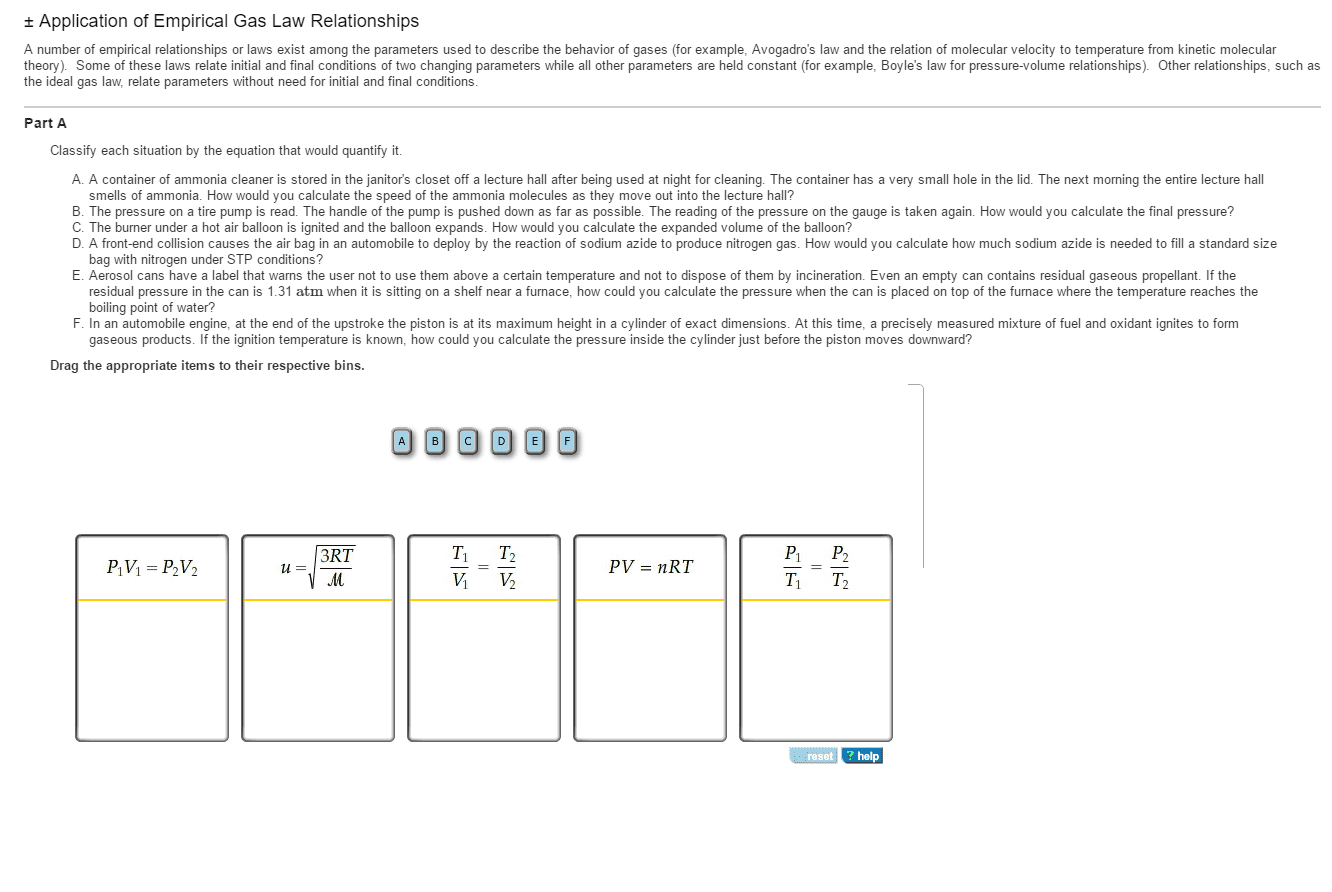CHM 111 Lecture Notes - Lecture 15: Ideal Gas Law, Molar Volume, Molar Mass
40 views5 pages
22 Mar 2017
School
Department
Course
Professor


26
CHM 111 Full Course Notes
Verified Note
26 documents
Document Summary
These particles move in straight lines until they collide with the container wall or another particle, then they bounce off. There is a lot of empty space around the particles. Particles do not have attraction to each other. Shape depends on their container - no fixed volume or shape. S l - tm - melting temperature. L g - tb - boiling temperature. Gas pressure is a result of the constant movement of the gas molecules and their. A gaseous atom or molecule collides with a surface. The result of many of these molecular collision is pressure. solutions with the surface around them. Number of particles in a given volumes. Average speed of the gas particles - depends on temperature. The higher the concentration, the greater the pressure. As volume increases, concentration of gas molecules decreases, in turn results in fewer molecular collisions, which results in lower pressure. A low density of gas particles results in low pressure.
Get access
Grade+20% off
$8 USD/m$10 USD/m
Billed $96 USD annually

Homework Help
Study Guides
Textbook Solutions
Class Notes
Textbook Notes
Booster Class
40 Verified Answers
Class+
$8 USD/m
Billed $96 USD annually

Homework Help
Study Guides
Textbook Solutions
Class Notes
Textbook Notes
Booster Class
30 Verified Answers


